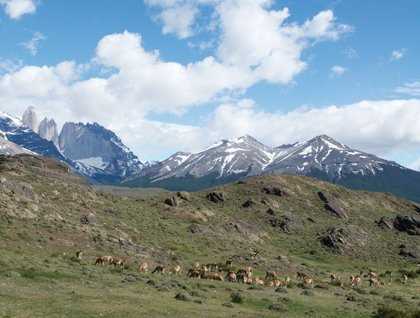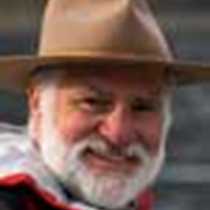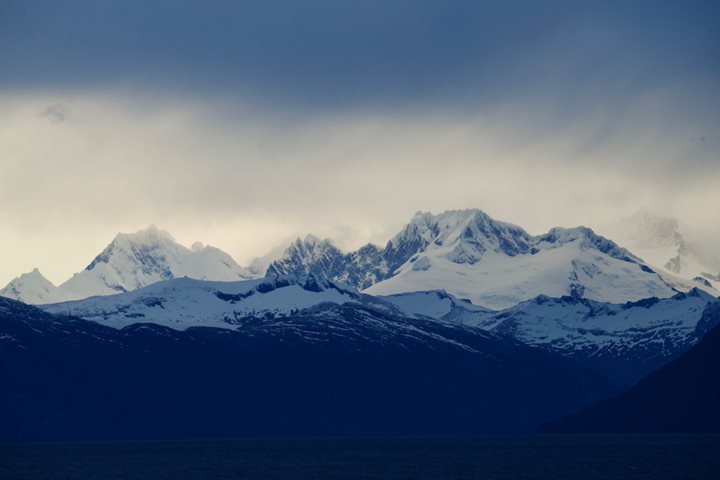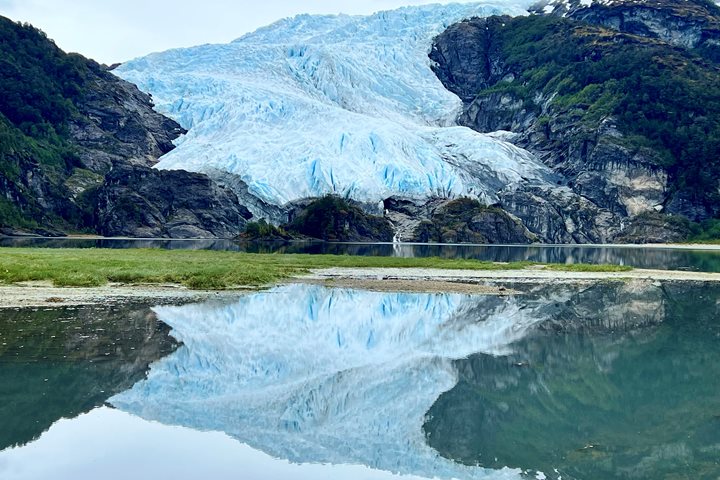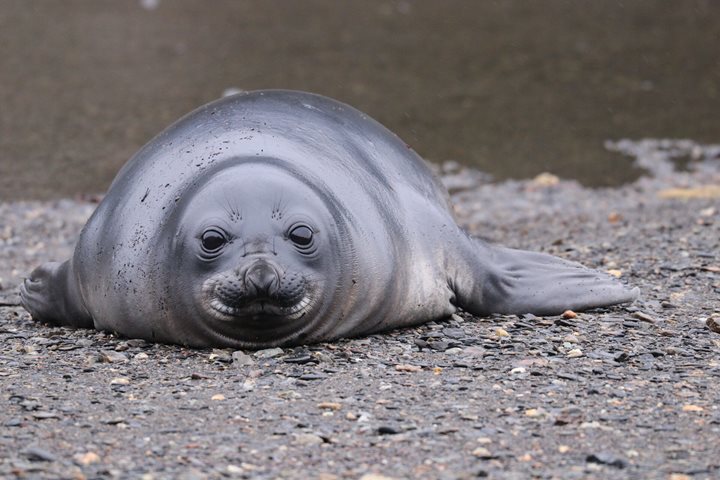A brisk wind greets us as we disembark early for our journey to Paine National Park. The skies are glowing rich reds and deep oranges as the sun rises. In the distance the moon and some lenticular clouds delicately shine in the lovely morning light. There are some birds about, black-necked swans, Chilean skuas, and kelp gulls.
The road quickly leads us out of Puerto Natales and on to the highway north. We are soon into rolling hills, with rich pastures, streams in the shallow valleys, and cattle or sheep quietly grazing. After a little while a good number of Andean condors are sighted, on a recent kill. The buses stop and we take time to get really good views of these magnificent birds, often jostling and squabbling over rights to get at the feast. There are also some crested caracaras now displaced from the feeding frenzy and quietly waiting for the condors to finish gorging themselves. A little further along we see a gaucho on horseback and accompanied by his sheepdogs.
We stop at Cerro Castillo to make use of the facilities, have a coffee, and maybe buy something; there are books, souvenirs, jewellery, and snacks to be had if one is so inclined.
Soon enough we are on our way again and we catch sight of a group of Darwin’s rheas feeding. These ostrich-like birds were high on the list of animals we wanted to spot today. The winds are very strong and when we spot another groups of rheas taking refuge behind a barberry bush we are all amused.
The first sights we get of the majestic Paine Massif and the deep blue waters of Sarmiento Lake leave us expressionless. The waters are covered with white horses, whipped up by the very strong winds whistling across the Patagonian Steppe.
No matter what option was taken today there is no escaping the winds, gusting at 60 knots. There is no need to be reminded that winds are and ever present companion in these southern regions. Walking is a challenge but all the more worthwhile as we soak in the commanding views all around us and close up views of grazing guanaco herds. They are one of the South American camels, the group is made up of four species the vicuña, alpaca, and llama, and the latter two are domesticated.
There are also a good number of birds spotted along the way such as: Chilean flamingos, upland geese, crested ducks, rufous collared sparrows, and others. Many plants are in full bloom; barberries, ladies slippers, guanaco bushes.
After our morning activities we arrive at the Serrano Hotel for lunch. It is a sumptuous affair, which includes a lamb asado. Before we settle down to the meal we take the opportunity to see the cooks expertly cook the barbecue.
The return to the ship is a smooth affair and for many a chance to get some sleep.
For the second night the ship will remain alongside in Puerto Natales, no doubt a welcome opportunity to recover from the fabulous day in this remarkable place and from the buffeting we all received from the famous Patagonian winds, now experienced firsthand!

